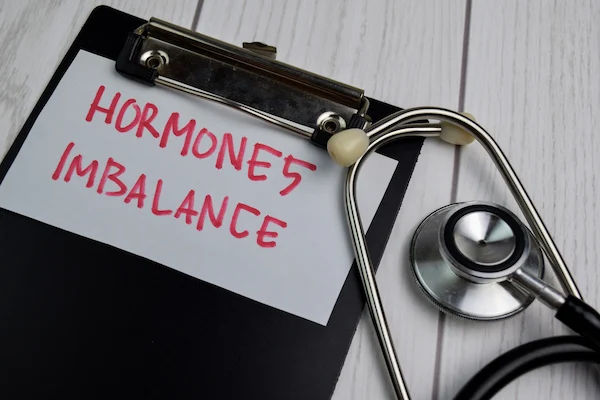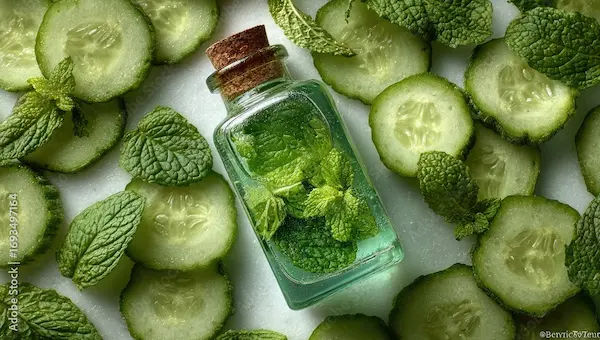Scarlet Fever: Symptoms and Treatment Overview
Learn about scarlet fever, its symptoms, causes, and treatment options. Understand how this bacterial infection develops and the steps for effective recovery.


Scarlet fever is a bacterial infection that mostly affects children but can occur in adults as well. It causes a distinctive rash, fever, and sore throat. While it may sound scary, the good news is that it’s treatable with proper medical care. In this article, we’ll discuss the symptoms, causes, treatment, and ways to manage scarlet fever effectively.
What is Scarlet Fever?
Scarlet fever is caused by Group A Streptococcus (GAS) bacteria, the same bacteria responsible for strep throat. When these bacteria release toxins, they trigger a red, sandpaper-like rash, one of the hallmark signs of scarlet fever.
Though it was once a serious childhood illness, antibiotics have made it much easier to treat today. However, if left untreated, it can lead to complications like rheumatic fever or kidney problems.
Consult a Top Specialist
Symptoms of Scarlet Fever
The symptoms usually appear 2–4 days after exposure to the bacteria. Common signs include:
Early Symptoms:
- High fever (101°F or higher)
- Sore throat (often severe, with difficulty swallowing)
- Red, swollen tonsils (sometimes with white patches or pus)
- Headache and body aches
- Swollen neck glands (lymph nodes)
- Later Symptoms (1–2 days after fever starts):
- Red rash – Starts on the chest and stomach, then spreads to other body parts (feels like sandpaper).
- Flushed face with a pale area around the mouth (circumoral pallor).
- Strawberry tongue – The tongue may appear red and bumpy, with a white coating early on.
- Peeling skin – After the rash fades (usually after a week), the skin may peel, especially on fingers and toes.
Causes & How It Spreads
Scarlet fever is highly contagious and spreads through:
- Respiratory droplets (coughing, sneezing, or talking).
- Direct contact with an infected person’s saliva or nasal mucus.
- Touching contaminated surfaces (like toys or doorknobs).
- Children between 5–15 years are most at risk, especially in crowded places like schools.
Diagnosis & Treatment
Below are the diagnosis and treatment options for scarlet fever
Diagnosis:
- A doctor can diagnose scarlet fever by:
- Physical examination (checking for rash, sore throat, and fever).
- Throat swab test (to confirm Group A Strep infection).
Treatment:
- Since it’s a bacterial infection, antibiotics (like penicillin or amoxicillin) are the primary treatment.
- Antibiotics help reduce symptoms quickly (usually within 24–48 hours) and prevent complications.
- Pain relievers (like acetaminophen or ibuprofen) can ease fever and throat pain.
- Hydration & rest are crucial for recovery.
Important: Always complete the full course of antibiotics, even if symptoms improve, to prevent recurrence or complications.
Get Your Health Assessed
Home Care & Prevention Tips
Below are a few home care and prevention tips,
Managing Symptoms at Home:
- Stay hydrated – Warm teas, soups, and cool liquids soothe the throat.
- Gargle with salt water – Helps reduce throat pain.
- Use a humidifier – Moist air eases breathing and throat irritation.
- Avoid irritants – Stay away from smoke or strong fumes.
Preventing Spread:
- Wash hands frequently with soap and water.
- Cover your mouth while coughing/sneezing.
- Avoid sharing utensils, towels, or personal items.
- Keep infected children home until 24 hours after starting antibiotics.
When to See a Doctor?
Seek medical help if:
- Fever lasts more than 48 hours after starting antibiotics.
- Difficulty breathing or swallowing occurs.
- Rash spreads or worsens.
- Signs of dehydration (dry mouth, dizziness, or reduced urination).
Need expert advice? You can book a consultation with an Apollo24|7 specialist today for personalized care and guidance. Stay informed, stay safe!
Final Thoughts
Scarlet fever is a bacterial infection that requires timely diagnosis and treatment to prevent complications. Recognizing symptoms such as a red rash, sore throat, and fever is crucial for early medical intervention. With proper antibiotics and supportive care, most cases resolve effectively. Maintaining good hygiene and seeking prompt medical attention can help manage the condition and reduce the risk of spread.
Consult a Top Specialist
Consult a Top Specialist

Dr. Rajib Ghose
General Physician/ Internal Medicine Specialist
25 Years • MBBS
East Midnapore
VIVEKANANDA SEBA SADAN, East Midnapore

Dr. Ramya Hari
General Practitioner
18 Years • Medical Head & Family Physician, DG Shipping Approved Doctor, Panel Physician - UK Visa Medicals
Chennai
Apollo Medical Centre Kotturpuram, Chennai

Dr. Ajay K Sinha
General Physician/ Internal Medicine Specialist
30 Years • MD, Internal Medicine
Delhi
Apollo Hospitals Indraprastha, Delhi
(200+ Patients)

Dr. Hariprasath J
General Physician/ Internal Medicine Specialist
19 Years • MD (Gen Med), FCCP, Dip (Diabetology, UK)
Chennai
Apollo First Med Hospitals P H Road, Chennai
(200+ Patients)

Dr. Mohammed Sharouk Khader
General Physician/ Internal Medicine Specialist
11 Years • MBBS, Bach. of Med. & Surg., Dip. of American Board of Family Med.
Chennai
Apollo Hospitals Greams Road, Chennai
(125+ Patients)
Consult a Top Specialist

Dr. Rajib Ghose
General Physician/ Internal Medicine Specialist
25 Years • MBBS
East Midnapore
VIVEKANANDA SEBA SADAN, East Midnapore

Dr. Ramya Hari
General Practitioner
18 Years • Medical Head & Family Physician, DG Shipping Approved Doctor, Panel Physician - UK Visa Medicals
Chennai
Apollo Medical Centre Kotturpuram, Chennai

Dr. Ajay K Sinha
General Physician/ Internal Medicine Specialist
30 Years • MD, Internal Medicine
Delhi
Apollo Hospitals Indraprastha, Delhi
(200+ Patients)

Dr. Hariprasath J
General Physician/ Internal Medicine Specialist
19 Years • MD (Gen Med), FCCP, Dip (Diabetology, UK)
Chennai
Apollo First Med Hospitals P H Road, Chennai
(200+ Patients)

Dr. Mohammed Sharouk Khader
General Physician/ Internal Medicine Specialist
11 Years • MBBS, Bach. of Med. & Surg., Dip. of American Board of Family Med.
Chennai
Apollo Hospitals Greams Road, Chennai
(125+ Patients)





